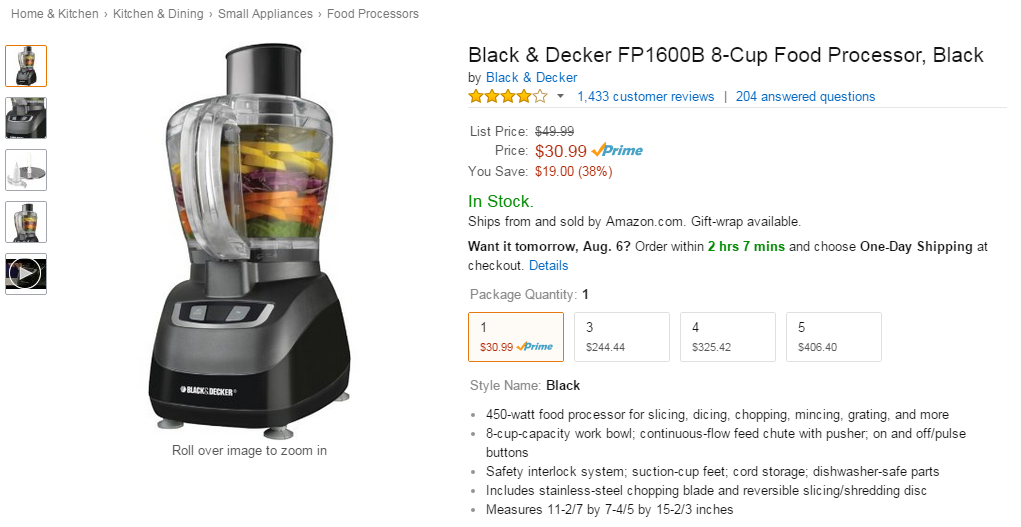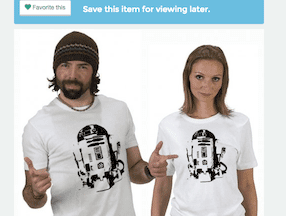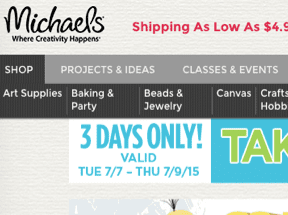In our fast-paced world, everyone wants to get as much information as possible in the shortest amount of time. This rings especially true with product descriptions.
While bullet points about products are key, detailed descriptions about products and services are necessary to answer questions and increase visibility. Amazon takes this approach, making it quick and easy to first determine if the product you’re viewing even meets your needs. For example, searching for an inexpensive food processor may turn up the 8-Cup Black & Decker model FP1600B.
By listing key features using bullet points, shoppers can quickly decide if the product is worth further study. In the example above, we immediately see the power, the capacity, and what accessories are included. From there, we can move on to the detailed description and customer reviews section, or simply return to the search results.
Bullet points also give us other benefits:
- Alternate terms (or keywords) to explain features that are described in more detail elsewhere on the page;
- Display more important components as customer questions arise;
- Make links to supporting content, such as videos, testimonials and blog posts, more prominent.
Writing bullet points isn’t just a matter of putting “points” in front of sentences, though. To be successful, you need to focus on the ability of a shopper to read and understand, very quickly, what a product does. It requires the use of simple, yet descriptive, terms. Bullet points are not a place to keyword stuff, because shoppers can’t be left thinking about what you’re trying to say.
The standards of where bullet points appear on the page have changed over the years. Initially, we would read a product description and then look at the list of features. Now we want to see that short list first, and that content determines if we’re going to spend time reading anything else on the page. Most products will benefit more by listing the bullet points first.
Another option is to integrate bullet points within the product description. This works well when the description is right aligned, and the points are placed after the first paragraph.
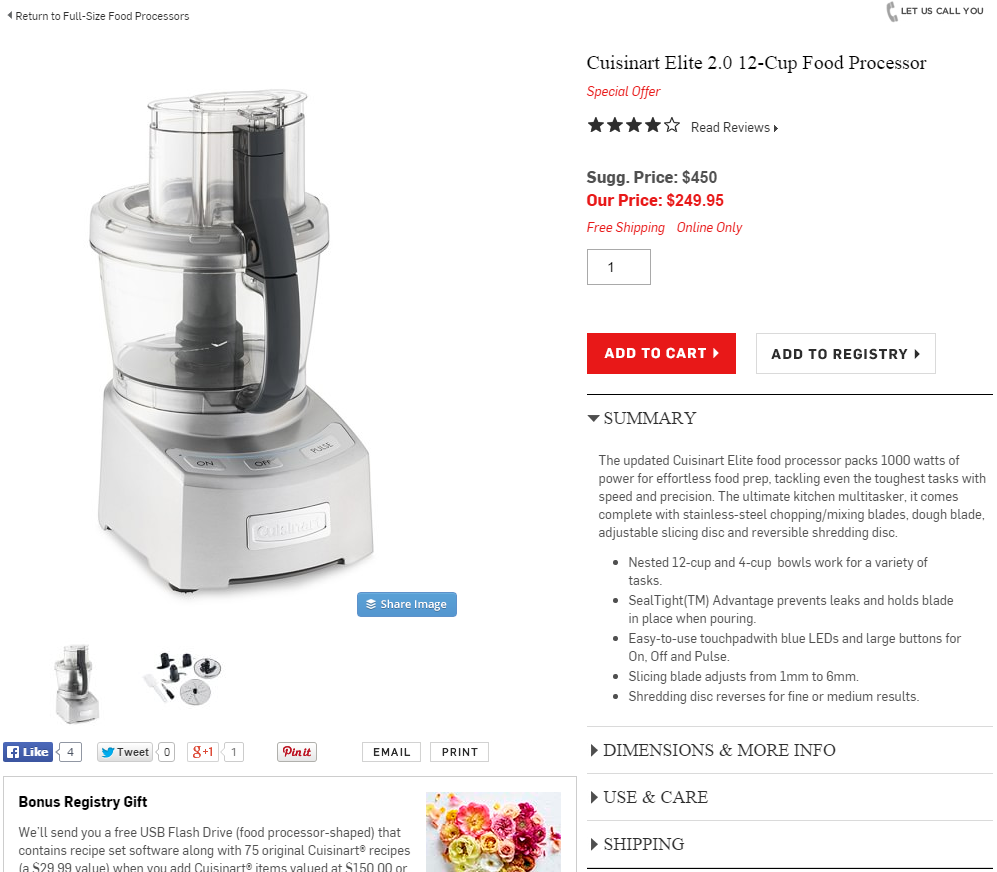
You can also list bullet points after the first paragraph the product description. Source: Williams-Sonoma.
Most products are best explained in three to seven bullets. Some highly detailed ones may need more, but consider what’s most important. You don’t want to sacrifice the shopping session because of lengthy text that’s sole purpose is to help the shopper determine the product’s suitability.
Bulleted lists should include the product’s key selling points, which includes:
- Prominent and unique features;
- Dimensions and weight;
- Materials (e.g. stainless steel, 100 percent cotton);
- Special care instructions (e.g. hand wash only);
- Where the product was made (ideal for U.S.-made items);
- Warranty information.
Look at AmazonBasics’ Come-Apart Shears page. The fact they “lock” is key, and who knew they could be used to crack open nuts?
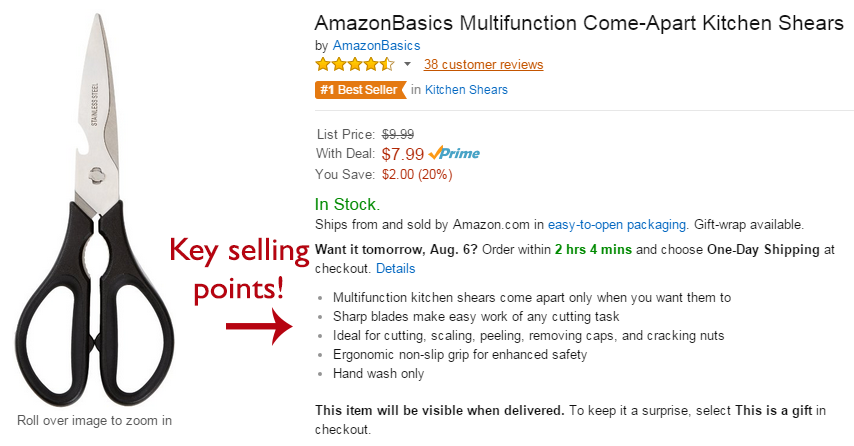
Keep bullet points short and sweet. List 3 to 7 selling points. Source: Amazon.
While Amazon’s details list format is a good example, the product description that appears further down the page typically isn’t sufficient at all. Which brings me to the most important “bullet” point about bullet points: Bullet points should not replace the product description.
Rely solely on bullet points, and shoppers will look elsewhere for the details they need.

